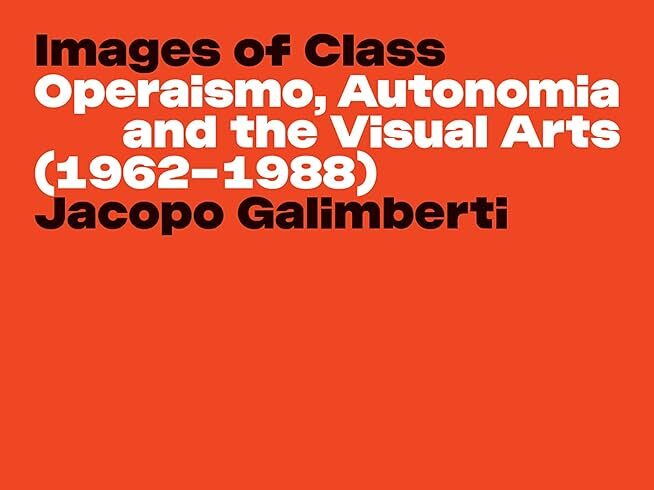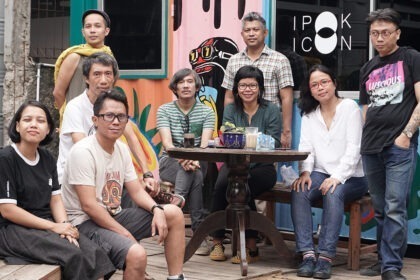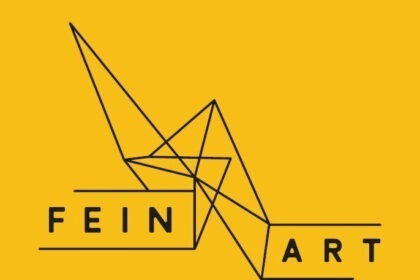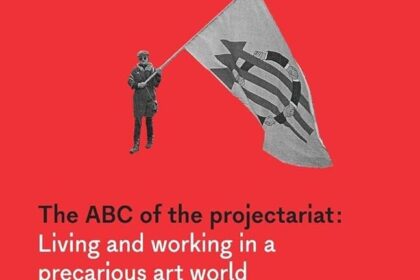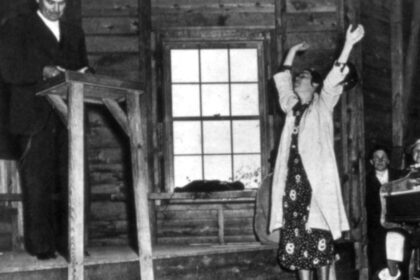Book Review: Images of Class: Operaismo, Autonomia and the Visual Arts (1962-1988) by Jacopo Galimberti (Verso, 2022)
Mikkel Bolt Rasmussen
In his 1923 treatise For a New Architecture the French architect Charles-Edouard Jeanneret, known as Le Corbusier, ended with a wager: either modern capitalist societies handed over the built environment to the new generation of modern architects like himself or they risked a revolutionary upheaval. By the early 20th century, the working-class was perceived as a threat to the established order and it took two world wars, an economic crisis and fascism to persuade the bourgeoisie to give the working-class a social and political role in the centers of capitalist accumulation in Europe and North America. World War I had not solved the underlying problems of the capitalist mode of production establishing a new stable capital-labor relation. The inter-war period was therefore characterized by huge social conflicts that took the form of interstate rivalry, soaring inflation and widespread unemployment, racism and a series of mostly unsuccessful revolts, insurgencies, coups, and the Russian Revolution. Le Corbusier’s proposal was to solve all these conflicts through architecture. As he put it: “Society is filled with a violent desire for something which it may obtain or may not. Everything lies in that: everything depends on the effort made and the attention paid to these alarming symptoms. Architecture or Revolution. Revolution may be avoided.” [1]
Today one cannot avoid being somewhat puzzled by Le Corbusier’s grandiose suggestion of the role of architecture, but he was merely expressing the basic modernist idea of art’s capacity to change society or at least change society’s image of itself. In the case of Le Corbusier, it was of course architecture as urban planning that was to take on the role of transformative agent. Le Corbusier’s promise – which was a strange reactionary genuflection to the ruling powers – was that spatial transformation could somehow replace social transformation or make it redundant.
For large parts of the contemporary avant-garde movements in the period, including the Surrealists and the Soviet avant-gardes, spatial and social transformation went hand in hand. Spatial and visual transformation was to be an integral part of a revolutionary process where wage labor, the money form and the state were to be replaced by a different social formation. As we know, Le Corbusier came out on top in so far as the utopian modernist project was transformed into modernization during the post-war period. Spatial transformation was cut lose from anti-capitalist social transformation and became urban planning and what Guy Debord in the 1960s called the society of the spectacle.[2]
The dream of a joint spatial and social transformation underwent significant change in the decades following World War II. We know this as the story of the transition from what Peter Bürger called “the historical avant-garde” to “the neo-avant-garde” where anti-institutional gestures of revolt supposed to be part of a social revolution ended up inside the institutions of capitalist society.[3] The institution of art became the “natural” environment for experimental, even explicitly politicized art. The idea of an end to capitalism, without which modernism would not exist according to T.J. Clark, did obviously not disappear overnight and one of the places where the idea of an encompassing supersession of capitalist society flourished was in Italy from the mid-1960s to the late-1970s.[4]
The partial rediscovery of the first proletarian offensive (1917-1921) gripped Italy for more than a decade from the mid 1960s with widespread worker insubordination, factory occupations and street rioting. The publication of Michael Hardt and Antonio Negri’s Empire in 2000 and the subsequent translation of some of the important works from the Italian workerist and Autonomist tradition, including Mario Tronti’s 1966 magnum opus Workers and Capital in 2020, has helped shed light on this important period where worker unrest and a critique of daily life fused into a revolutionary wave.[5] In the English-speaking world Negri and thinkers such as Franco “Bifo” Berardi have in the last 20 or so years come to play an important role as a new-old revolutionary theory capable of analyzing the ongoing misery and deciphering the old mole’s new guises. Negri, Bifo and younger Italian thinkers such as Paolo Virno and Maurizzio Lazzarato have become household names in contemporary art but so far little has been written on the status of art and culture within the workerist and post-workerist tradition.
Jacopo Galimberti’s important new book Images of Class: Operaismo, Autonomia and the Visual Arts (1962-1988) is the first real attempt to map the artistic and cultural discussions that took place in these milieus. The classic anthology The Golden Horde, edited by Nanni Balestrini and Primo Morióni, which was translated into English in 2021, remains an important source. However, Galimberti’s book is the first large study of the artistic and art theoretical discussions that took place within the different groups and journals that constituted a row of small heretical Marxist journals in the mid-1960s but by the mid-1970s had become a large milieu of revolutionary experiments.
We have a number of books and texts in English that deal with Italian post-world war experimental art, including Jaleh Mansoor’s Marshall Plan Modernism: Italian Postwar Abstraction and an October special issue on “Postwar Italian Art”, but none have sought to analyze the role of art and culture in Operaismo (workerism) and Autonomia (autonomism). Previous analyses have upheld a fairly traditional art historical approach with art works at the center and workerist concepts used to explain features of the artworks. Galimberti’s book should be recommended for its detailed presentation of the debates on art and culture within workerism and its expanded understanding of visual material. He moves effortlessly from context to theoretical discussions to specific cultural products.
Operaismo emerged as an attempt in the early 1960s to create a position outside the Italian Communist Party (PCI) and its Gramscian project of hegemony where the party leader Palmiro Togliatti sought to transform the party into a mass party modelled on social democracy. The PCI considered itself a “responsible” partner taking part in the transformation of Italy into a modern industrialized nation after World War II where the class struggle was managed through reforms that gave large parts of the working-class access to steady jobs and cheap commodities. Operaismo rejected this deal and stressed the antagonistic character of the working-class. By redistributing extorted surplus-value the democratic welfare state managed to a certain extent to pacify the toiling masses but the despotism of capital’s mute compulsion in the factories did not disappear, the workerists argued. The huge factories in the north of Italy where hundreds of thousands of migrant workers from the south toiled were not exactly dream worlds and the workerist sought to analyze the new working-class and its mentality by carrying out workers’ enquiries that highlighted the different ways workers rejected the labor regime of the huge Fordist factories as well as the workers’ official representatives, political parties and trade unions.
Over the course of nine detailed chapters, Galimberti’s 400+ page book lays out how a number of artists, designers and architects were part of Operaismo and later the Autonomia movement. Some were directly involved making drawings and illustrations in the different journals and periodicals that formed the backbone of these currents, while others were influenced by the antagonistic understanding of the capital labor relation and participated in meetings and discussions. The goal of the workerist theory of the antagonistic character of the working-class was to re-introduce the working-class viewpoint, where the working-class went from being trapped in capitalist relations of production to becoming the “original” antagonistic subject that constantly forced capital into innovating its production. The purpose of Marxist theory was not to study capitalist development but the working-class and its political advances. Only in so far as Marxism adopted the “partial view” of the working-class, as Tronti phrased it in Workers and Capital, would it be possible to not only “grasp the totality” but destroy it. As Tronti put it, it was not a question of prefiguring the future or recounting the past but of contributing to the destruction of the present.
When it came to art and culture the workerist adopted a stern negative attitude. This did not mean that they did not engage with culture, art and architecture – the imposing names of Alberto Asor Rosa and Manfredo Tafuri testify to that – but their take was characterized by a radical Marxist refusal of culture’s pretension of universality. Tronti had made the position clear: “If culture is the reconstruction of the totality of man, the search for his humanity in the world, a vocation to keep united that which is divided – then it is by nature reactionary and should be treated as such.”[6] Culture was first and foremost a thing of the bourgeoisie, the enemy of the working-class. Therefore, art and culture had to be subjected to a ruthless critique. Its lofty gestures and the idea of culture as a totality had to be subjected to a damning critique that showed the class nature of culture. As Galimberti shows this task was first carried out by the literary scholar Alberto Asor Rosa, whose The Writer and the People was the first important example of the workerist class critique of culture (as bourgeois). The critique was not only aimed at the ruling class but also at the Left who used culture to enlarge its electoral base of national democracy by appealing to the “popular classes”. Asor Rosa rejected this maneuver: “We must simply demonstrate that culture ends up conforming to capitalist social reality, because it has always been, at the best of times, nothing but a – mad, desperate, at times moving – response of the bourgeois-intellectual stratum to the system’s inexorable laws of development.”[7]
The destructive nature of the project of workerism thus characterized its take on art and culture. These phenomena were to be confronted by a class critique that showed their inherent class character. The radical refusal of culture also meant that workerism refrained from producing images of a ‘positive’ worker’s culture. There was no working-class culture and it did not make sense to try and produce proletarian art. This attitude obviously ran against the established worker’s movement’s representations of hardworking but dignified workers producing a new world. As Galimberti shows this obviously presented artists embedded in the workerist groups with a representational problem where they had to develop a different visual vocabulary. The artist Mario Mariotti illustrated the Classe Operaia journal with a series of drawings where the worker was a monster who haunted and harassed the factory boss. The worker took on a demon-like character, a smiling destructive figure. This was the working-class as “the class-destroying class”, the “dissolution of the hereto existing world order”, Marx had written about in A Contribution to the Critique of Hegel’s Philosophy of Right.[8]
Asor Rosa’s class critique of art and literature was followed by Manfredo Tafuri’s class critique of architecture. With the philosopher Massimo Cacciari and the research group he ran at the School of Architecture in Venice Tafuri developed a powerful analysis of the function of architecture in the modern city combining Tronti’s notion of the inherent refusal of the worker with German sociology and Critical Theory. The object of Tafuri’s critique was the artistic and architectural avant-garde movements that considered art and culture to be of tremendous importance. This was not the case, Tafuri warned. Neither a painting, a ready-made nor an individual building or even a large-scale urban project could raise to the level of capitalist development and somehow challenge it. No built form could make a difference on a social level. The class critique of architecture was to make that crystal clear.
The task Tafuri set himself was dismantling the ideology of modern art showing how the autonomy of art destined it to being at best a symbolic sidekick to capitalist planning. The problem was not how the culture industry turned authentic art into commodities but the way the very idea of culture removed the fundamental opposition between workers and capital. It was thus necessary to introduce a class perspective into the analysis of art and culture.
Le Corbusier’s dream of transforming society through architecture and urban planning was an important example for Tafuri of the ideological character of architecture. Le Corbusier had understood that architecture had to change scale and develop into planning, but he had remained trapped in the ideology of architecture believing that he, the great modern architect, could somehow steer the process. The dream of a joint social and artistic transformation turned out to be a counter-revolutionary transformation in which modern architecture worked in tandem with a restructured capitalism. Capitalism did not need the modern architect to radically transform society.
The workerist stance on art and architecture obviously left little room for creative practices but as Galimberti shows the rigorous critique did however not result in a complete abandonment of architecture and design. Groups like Archizoom were influenced by Tafuri and Asor Rosa’s writings and sought to use them in different kinds of architectural or flashy design experiments that were at odds with the approach of the Center-Left who sought to develop a romanticized aesthetic of the ascetic noble worker. For Archizoom there was no working-class culture. Instead, one could highjack and subvert dominant culture creating negative working-class kitsch objects. The group’s glossy design was intended as an attack on the autonomy of art as well as the idea of noble working-class culture where workers should reject consumer society’s empty commodities. Consuming showy images was a kind of refusal. As they put it, “the worker does not want a better world, but more money and less work”.[9]
Asor Rosa, Tafuri, Archizoom and the N Group form the backbone of the presentation of the first phase of the workerist experience. Galimberti also devotes a chapter to a presentation of the militant Bordigist researcher Danilo Montaldi and his collaboration with Giuseppe Guerreschi, where the two engaged in an exchange that resulted in collective art writing, in which the roles of the artist and the critic were challenged in favor of horizontal co-research. The question of the representation of the worker is the real thread in the book. In another chapter, Galimberti first surveys the layout of and illustrations in workerist journals such as Potere Operaio, where the worker takes on the form of a robot, and secondly presents a series of actions, films and experiments with tape-recorders where artists such as Baruchello, Nani Balestrini and Giovanni Rubino sought to use art as a vehicle for counter-information, neither representing workers from the outside nor romanticizing them.
The question of a transition from workerism to autonomy has always been a much-debated issue within the revolutionary milieu in Italy. Some stress continuity, while others argue that the Autonomia movement was a much larger phenomenon that cannot be traced back to relatively small workerist groups in the mid 1960s. Galimberti opts for continuity by stressing the links connecting Classe Operaia with Potere Operaio and the Lotta Feminista group and different parts of the 1977 movement. Marcello Tarì has convincingly argued that the autonomist movements were something different where workerism became part of a much larger “impure communist movement” that also included insurrectionism, feminism, dadaism, antipsychiatry and American counterculture.[10] If the workerist philosophers and researchers had already expanded the figure of the worker with the notion of the “mass worker” in the mid-1960s deifying the established working-class movement’s idea of the industrial worker, the subjects of Autonomia were radically diverse and included migrant workers, students, women, homosexuals, prisoners, children and all the groups that fought against capital and the state for a different life.
As Galimberti notes the autonomist movement emerged as a response to the mutation in the political economic situation of the country. In the early 1970s Italy was in a deep economic crisis with a huge trade deficit that necessitated a reshuffling of the political forces where the Communist Party entered a “democratic alliance” with the Christian Democrats. The crisis meant the state rolled back public spending, including subsidies for housing, electricity and telephone service, and adopted a monetary policy that led to inflation. This led to a huge surge in protests, demonstrations and acts of sabotage but also the use of different kinds of everyday anti-capitalist practices where people looted shops or squatted in buildings. To an even larger extent than May ‘68 Autonomia became a huge experiment in living differently, fusing art and everyday life outside the institutions of capitalist society.
Galimberti notes the new features of the autonomist movement but contrary to Tarì and Sergio Bologna he prefers to emphasize the continuity and therefore proceeds to present aspects of the artistic and visual language of the Autonomia movement stressing the continuity from workerism to the autonomist currents.[11] He devotes a chapter to the largely overlooked work done by Feminist militant artists within the Wages for Housework campaign including Mille Gandini’s 1975 exhibition “Mum Has Gone Out” where she presented cooking pots sealed with barbed wire and photos with feminist symbols drawn on dusty bookshelves and windowpanes.
A sixty-page long chapter contains an analysis of the graphic design of a number of underground magazines as well as radio stations that became central in the 1977 movement not least the legendary A/Traverso magazine associated with the Bologna based Radio Alice that guided protesters during street battles but also functioned as a space for technological experimentation for a new kind of subjectivity that staunchly rejected any kind of Leninist tendency present within workerist thought. If Operaismo had shown how the logic of the factory had expanded to include the city which had become a sphere of capitalist domination but also a place for acts of sabotage the autonomist movement went further and abandoned the confrontational logic of workerism. “Dissolution is the innovative form of social action”, as A/Traverso put it.[12] There was a distinctly anti-political stance in large parts of the autonomist movement. Marx was obviously still a reference, but he was subjected to ridicule and distortion and merged with the post-May ‘68 philosophy of desire put forth by some including Gilles Deleuze and Félix Guattari who wrote: “Politics is reductive, it restores the dictatorship of the Signifier in the face of the desiring web of a-signifying desire”, the A/Traverso collective wrote.[13] As the headline of one of the issues of A/Traverso said: “Don’t take power!”
Galimberti does a great job mapping a number of the most important tendencies in Autonomia and the way art was put to use not only as a means of communicating but also in the expanded “mass avant-garde” sense of living differently or poetically. For the so-called Metropolitan Indians, the Feminists and the Gays, three of the most important currents in the 1977 movement, there was an abandonment of the classic confrontational strategies based on a dialectic of recognition in favor of the creation of “other spaces”. Galimberti describes how a number of artists were active in the different groups. He presents Gianfranco Baruchello’s Agricola Cornelia project in the outskirts of Rome where agriculture and Duchamp went hand in hand, and he discusses Pablo Echaurren’s different magazine projects and zines where a Dada-inspired satire of political jargon was given free rein. “After Mao, June” and “After Marx, April” the Metropolitan Indians wrote on walls in Bologna.
Galimberti’s book is an important contribution to the critical analysis of a so-far largely neglected aspect of Italian workerism and the autonomist movements. It is a historical analysis, Galimberti of course is deeply interested and engaged in the material he is analyzing but he is not trying to position himself as a continuation of the workerist project. He frames the analysis within Marxist art history, referring to art historians like Clark and O.K. Werckmeister, and is more interested in presenting the workerist class critique of culture than doing it himself. It is interesting to note the difference between say the heated fight over the right way of engaging with or analyzing the Situationist movements between the pro-situ milieu and academic art historians and Galimberti’s take on Italian workerism. He ends the book by pointing in the direction of possible ways of activating the workerist vocabulary but the book is first and foremost a careful historical analysis and archival retrieval of the way workerism represented the refusal of workers.
This is probably the right thing to do, and I would even have preferred if Galimberti had stressed the historical distance more. This would not only have enabled him to discuss the question of the representation of class struggle today but also ask the question of the character of the events in February-March 1977: Is the 1977 movement the end of a protest cycle, the point at which the worker’s movement effectively ended, or was it in fact the prefiguration of a new protest cycle? In some respects, the anti-political perspective of the Metropolitan Indians and the other groups in 1977 resemble the destitutive gesture of the protests, riots and occupations we have seen since 2011. The contempt for politics and the established political system has been a constant feature in most of the mass protests that have taken place since the Arab Spring in early 2011. From the Arab Spring to riots in London in the summer of 2011 to Occupy to the Chilean students protests in 2013 to the Yellow Vest movement in France in 2019 and the George Floyd revolt in the summer of 2020 protesters have refused politics and politicians. The uprisings of the last decade have shown a tenacious desire to tear down and cancel prevailing political institutions and representations. The main difference between 1977 and the new protest cycle is obviously that today this refusal is rarely followed by an attempt to create alternatives as was the case in 1977. Today it is indeed difficult to envision alternatives. This might be where art comes in. Perhaps there’s still a place for creative practices that can both participate in the destruction of existing representations but also formulate a new radical imagination.
Mikkel Bolt Rasmussen is Professor in Political Aesthetics at the University of Copenhagen. His work has appeared in South Atlantic Quarterly, New Formations, Oxford Art Journal, e-flux journal, Rethinking Marxism and Third Text, among others. His books include various studies of the Situationist International, as well as Crisis to Insurrection (Minor Compositions, 2015), After the Great Refusal: Essays on Contemporary Art, Its Contradictions and Difficulties (Zero, 2018), Hegel after Occupy (Sternberg Press, 2018), Trump’s Counter-Revolution (Zero, 2019) and Late Capitalist Fascism (Polity, 2022).
Notes
[1] Le Corbusier, Towards a New Architecture [Vers une architecture, 1923], translated by Frederick Etchells (New York: Dover, 1986), pp. 288-289.
[2] Guy Debord, The Society of the Spectacle [La société du spectacle, 1967], translated by Donald Nicholson-Smith (New York: Zone, 1995).
[3] Peter Bürger, Theory of the Avant-Garde [Theorie der Avantgarde, 1974], translated by Michael Shaw (Minneapolis: University of Minnesota Press, 1984).
[4] T.J. Clark, Farewell to An Idea: Episodes from a History of Modernism (New Haven: Yale University Press, 1999), pp. 8-10.
[5] Michael Hardt & Antonio Negri, Empire (Cambridge, MA & London: Harvard University Press, 2000); Mario Tronti, Workers and Capital [Operai e capitale, 1966], translated by David Broder (London & New York: Verso, 2020).
[6] Ibid., p. 253. Quoted by Galimberi, p. 8.
[7] Alberto Asor Rosa, The Writer and the People [Scrittori e popolo, 1965], translated by Matteo Mandarini (London: Seagull, 2019), p. 23. Quoted by Galimberti, p. 40.
[8] Karl Marx, A Contribution to the Critique of Hegel’s Philosophy of Right [Zur Kritik der Hegelschen Rechts-Philosophie, 1844], translated by Annette Jolin & Joseph O’Malley, marxists.org, https://www.marxists.org/archive/marx/works/1843/critique-hpr/intro.htm
[9] Archizoom in a letter to the art critic Germano Celant, April 3, 1970, quoted by Galimberti, p. 131.
[10] Marcello Tarì, Il ghiaccio era sottile. Per una storia dell’Autonomia (Rome: DeriveApprodi, 2012).
[11] Sergio Bologna, “Review of Storming Heaven: Class Composition and Struggle in Italian Autonomist Marxism by Steve Wright”, in Strategies: Journal of Theory, Culture & Politics, vol. 16, no. 2, 2003, pp. 97-105.
[12] A/Traverso, “Quatro Frammenti” [1977], in Settantasette: La rivoluzione che viene Bianchi & Caminiti (eds.) (Rome: DeriveApprodi, 2007), p. 181.
[13] Ibid., p. 182.

